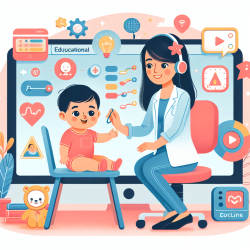The COVID-19 pandemic has brought about numerous challenges in the educational sector, particularly in early childhood education. One of the significant issues identified is the impact of facemasks on literacy learning. A recent study, "Impact of Using Facemasks on Literacy Learning: The Perception of Early Childhood Education Teachers," sheds light on this issue. Here’s how educators can use these findings to improve literacy outcomes for young learners.
Key Findings
The study involved 112 Spanish early childhood educators and highlighted several critical points:
- Facemasks have a notably negative impact on literacy learning, affecting both visual and auditory cues essential for reading and writing.
- Teachers who learned to read using the synthetic method (focusing on phonemes and syllables) reported a higher negative impact of facemasks compared to those who used the analytical method (focusing on whole words and phrases).
- The use of digital resources for literacy is highly valued and seen as an effective tool to mitigate some of the challenges posed by facemasks.
- There is an increased perception of the need for speech-language intervention in classrooms post-pandemic.
Practical Strategies for Educators
Based on these findings, here are some practical strategies that educators can implement:
1. Use Transparent Facemasks
Transparent facemasks can help mitigate the visual barriers posed by traditional facemasks. They allow students to see the teacher’s facial expressions and lip movements, which are crucial for phoneme recognition and emotional connection.
2. Integrate Digital Literacy Tools
Incorporate digital resources such as interactive reading apps and online phonics games. These tools can provide auditory and visual support, making up for the deficits caused by facemasks.
3. Amplify Your Voice
Using microphones or voice amplifiers can help overcome the sound attenuation caused by facemasks. This ensures that students can hear the teacher clearly, which is essential for phonological awareness.
4. Enhance Visual Aids
Utilize visual aids such as flashcards, picture books, and videos to support literacy instruction. These tools can provide additional context and help students make connections between spoken and written language.
5. Foster a Collaborative Environment
Encourage collaboration between generalist and specialist teachers. Sharing insights and strategies can help create a more unified approach to literacy instruction, ensuring that all students receive consistent support.
Encouraging Further Research
While the study provides valuable insights, it also highlights the need for further research. Educators and researchers should continue to explore:
- The long-term effects of facemask use on literacy development.
- The effectiveness of different types of facemasks and their impact on communication and learning.
- Innovative digital tools and methods to support literacy in the context of ongoing health measures.
By staying informed and adapting to new challenges, educators can continue to support the literacy development of young learners effectively.
To read the original research paper, please follow this link: Impact of Using Facemasks on Literacy Learning: The Perception of Early Childhood Education Teachers.










